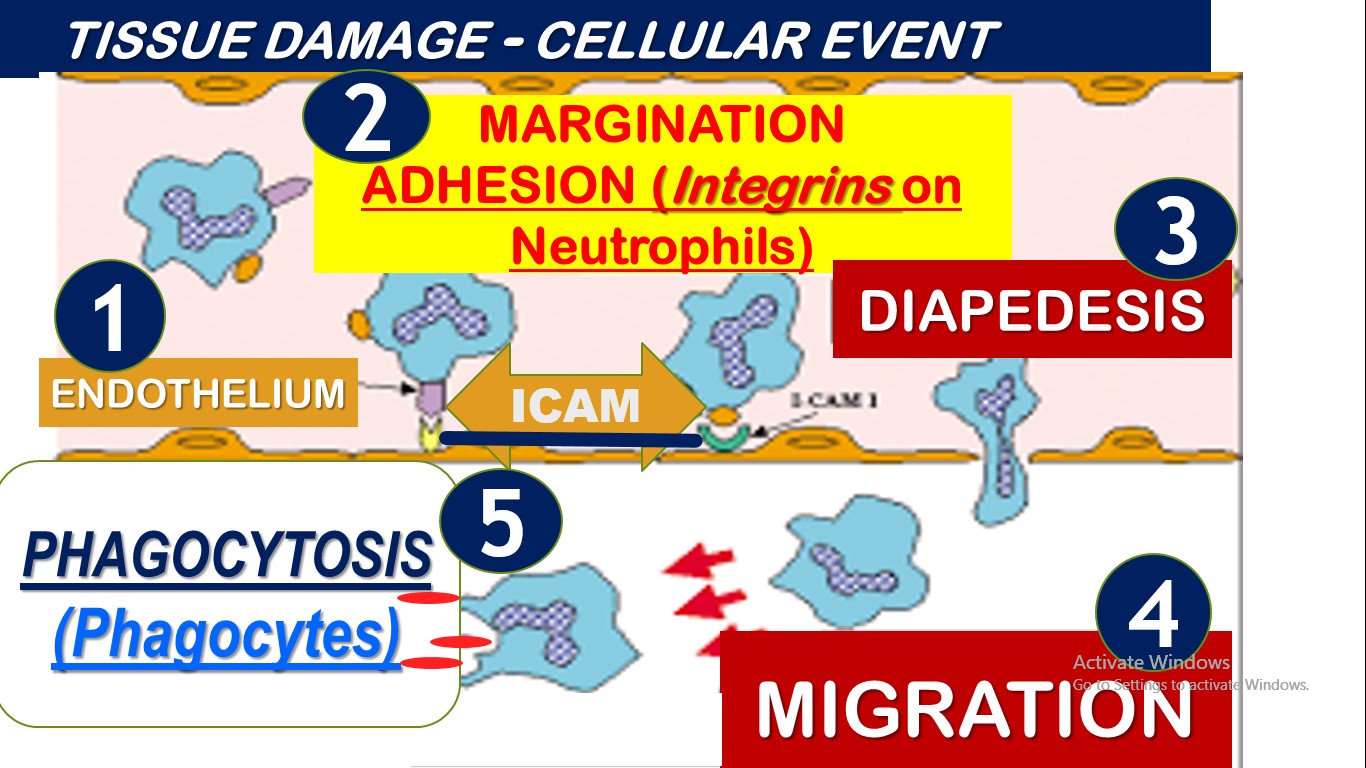
Leucocytes, Phagocytosis and Inflammation
White blood cells play an important role in protecting the body against all types of organisms or toxins that tend to damage the tissues and organs. The WBCs, also called leukocytes, are the mobile units of the body’s protective system. Six types of white blood cells are normally present in the blood. They are polymorphonuclear neutrophils, polymorphonuclear eosinophils, polymorphonuclear basophils, monocytes, lymphocytes,and, occasionally, plasma cells. The neutropils and monocytes protect the body against invading organisms mainly by ingesting them (i.e.,by phagocytosis). The life of the granulocytes (neutrophils) after being released from the bone marrow is normally 4 to 8 hours circulating in the blood and another 4 to 5 days in tissues where they are needed. It is mainly the neutrophils and tissue macrophages that attack and destroy invading bacteria, viruses, by phagocytosis (cellular ingestion).
When tissue injury occurs, whether caused by bacteria, trauma, chemicals, heat, or any other phenomenon, multiple substances are released by the injured tissues and leckocytes that cause dramatic secondary changes in the surrounding uninjured tissues. This entire complex of tissue changes is called inflammation. Decreased number of WBCs (leukopenia) would leave the body unprotected against many bacteria and other agents that might invade the tissues. Uncontrolled production of white blood cells (leukemia) can be caused by cancerous mutation of a myelogenous or lymphogenous cell. This causes leukemia, which is usually characterized by greatly increased numbers of abnormal white blood cells in the circulating blood.
At the end of the lesson students will be able to learn;
1. Types of WBCs and their role aganist invading microorganisms
2. Phagocytes and Phagocytosis
3. Acute Inflammation mechanism
4. Formation of Pus
5. Concept: Leukopenia and Leukemia



